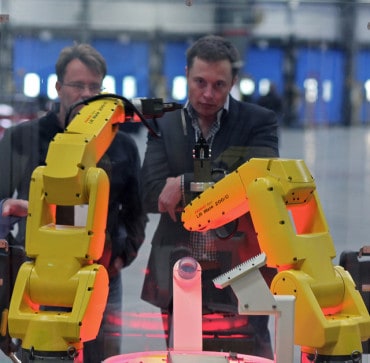
Machine learning, the IoT, and the cloud enable predictive maintenance.
Name of Organization: ThyssenKrupp
Industry: Manufacturing
Location: Alpharetta, GA USA
Business Opportunity or Challenge:
Most major cities could muddle through in the event of a transit system shutdown, but most activity would instantaneously grind to a halt in the event their vertical transit systems – elevators – stopped working. Prompt elevator maintenance is essential to today’s commerce.
ThyssenKrupp Elevator, one of the world’s leading elevator manufacturers, constantly seeks to improve the reliability of its elevators, and in recent years, has been turning to the Internet of Things and real-time data streaming to deliver enhanced performance.
The manufacturer maintains more than 1.1 million elevators worldwide, including those at some of the world’s most well-known buildings, such as New York’s brand-new 102-story One World Trade Center. It is estimated that ThyssenKrupp’s elevators at One World Trade Center, traveling at 23 miles an hour, will carry an estimated 3.5 million people every year. The challenge is to keep the elevators running smoothly, without so much as hiccups.
How This Business Opportunity or Challenge Was Met:
The key is to be able to monitor the performance of all elevators, and alert local technicians when problems appear imminent. ThyssenKrupp is connecting its elevators to the cloud, gathering data from its sensors and systems, and transforming that data into actionable analytics to enable predictive maintenance and preemptive repairs on its systems.
The company teamed up with Microsoft and CGI to develop a solution that connects ThyssenKrupp’s thousands of elevator-based sensors and systems within its elevators with Microsoft Azure IoT services. These onboard sensors monitor a range of functions, from motor temperature to shaft alignment, cab speed, and door functioning.
With data streaming to its cloud-based analytics engine, ThyssenKrupp can now capture the data and integrate it into a single dashboard. The dashboard provides two basic types of data: alarms that indicate an immediate issue, and events, which are stored and used for management. The solution provides technicians with real-time diagnostic capabilities, as well as accompanying data visualization that enables insights at a glance. “We wanted to offer predictive and even preemptive maintenance, so we can guarantee a higher uptime percentage on our elevators,” said Andreas Schierenbeck, CEO of ThyssenKrupp Elevator.
The company employed Microsoft Azure Machine Learning to gain a real-time view into elevator operations and maintenance. The system contains an intelligent information loop: Data from elevators is fed into dynamic predictive models, which continually update datasets via integration with Azure. Now, the elevators can actually “teach” technicians how to fix them.
Rory Smith, director of strategic development for the Americas at ThyssenKrupp Elevator, calls it the “virtual troubleshooter,” noting that “when the elevator reports that it has a problem, it sends out an error code and the three or four most probable causes of that error code.” There are about to 400 error codes possible on any given elevator.

As a result of enabling predictive and pre-emptive elevator maintenance from data in the cloud, the company has been able to increase reliability through predictive maintenance and rapid, remote diagnostic capabilities. Elevator technicians can use real-time data to define a needed repair before a breakdown happens. The two-way flow of data enables technicians to remotely put an elevator into diagnostics mode and deliver remote elevator commands. This results in reduced costs for ThyssenKrupp and its customers.
(Source: Microsoft, Microsoft News Center Staff)
Want more? Check out our most-read content:
White Paper: How to ‘Future-Proof’ a Streaming Analytics Platform
Research from Gartner: Real-Time Analytics with the Internet of Things
E-Book: How to Move to a Fast Data Architecture
The Value of Bringing Analytics to the Edge
Adidas Turns to Graph DB to Power E-commerce
How In-Memory Data Grids Turbocharge Analytics
Liked this article? Share it with your colleagues!






























